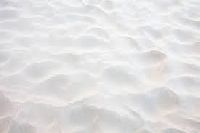
white sand
Coarse sand is a granular material that occurs naturally and the composition is basically the finely divided rocks and various other particles of minerals. One can define this particular sand by size and this is fine as compared to gravel but it is coarser as compared to the silt. One can define this sand depending on the textural class soil or the particular soil type. The soil particularly contains sand sized particles that exceed by eighty five percent. The composition of this particular sand has a variation and this depends on various sources of local rocks and various other conditions but the important constituent is silicon dioxide. Another important constituent is the calcium carbonate. As per the particle size, as provided by the geologists, the diameter can go up to 2 mm. The individual particle is called the sand grain. The most common constituent silicon dioxide generally in the quartz form is a mineral resistant for weathering. The bright white sand in this segment is found in the sub tropical and tropical coastal settings.
...more
Stone Dust
Stone dust is classified in the list of multipurpose materials used for the yard construction & also named as Fine aggregate or crushed stone. The global consumption of natural sand is very high, due to the extensive use of concrete. In India, we are facing shortage in good quality natural sand as its being depleted and causing serious threat to environment as well as the society. In the experimental study of strength characteristics of concrete using crushed stone dust as fine aggregate it is found that there is increase in compressive strength, flexural strength and tensile strength of concrete & can replace with natural sand. Stone dust becomes the perfect setting bed for the different types of stone pavers. One can make it smooth for the highly flat surface and it is known for its strength because it can duly support the stone paver weight. If there is a stone dust compact layer, it is a perfect suit for the passageway or yard surface. It is also a good choice for the sub base as far as the laying of the slabs and sub blocks is concerned. It is also used for the jointing of the slate which is a natural stone. Because of the extreme compactness of the surface of stone dust and because of its waterproof characteristics, one can take banking into priority at the time of installation. Stone Pavers and Stone dust - their importance Stone pavers are actually the stones that find usage for the construction of flat and easily approachable surfaces for driveways, patios, walkways, pool decks etc. These are also called the paving stones and the stone dust has a role to play. These generally come in rectangles or squares. The sizes are not identical like brick pavers and concrete pavers. The texture, colour and the size varies because these are sliced from quarries and are not manufactured from molds like various other types of pavers. The variations and the application of the stone dust add to the beauty, the compactness and the strength. These are well known for their durability and have been in the usage since thousands of years. There are various design options in the area of stone pavers and one can do the installation in the different patterns and the application of the stone dust depends on the various patterns as per the engineering standards of the present times. After the proper installation, the stone pavers will look amazingly beautiful. Installation can be a challenge compared to the brick and concrete equivalents.
...more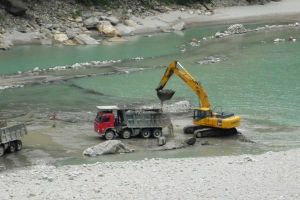
Yamuna River Sand
Yamuna river sand is a widely used construction material and is the most preferred choice as a fine aggregate material. High quality of Yamuna sand makes it perfect to be used for plastering house. River sand got from the Yamuna plays a major role in the infrastructure projects in India. This is far more superior to any other sand therefore, it is highly preferable. River sand has a major role in concrete and without it; concrete will not function as it is intended. The specific properties of concrete mix will be determined as per the proportion. The strong concrete will emerge from aggregate that is well graded and labelled. Advantages It is used for the building materials. It is mixed with the water and cement for making the concrete. The strength is very high bonding. Good compressive strength. The Yamuna river sand is temperature resistance.
...more
Red Sand
River sand has a major role in concrete and without it; concrete will not function as it is intended. The specific properties of concrete mix will be determined as per the proportion. The strong concrete will emerge from aggregate that is well graded and labelled.
...more
Red Clay Bricks
Red clay brick, "The traditional bricks" are man-made materials that are widely used in building, civil engineering work and landscape design. Red clay Bricks are produced with best quality filtered soil & sweet water and fired by coal at a high temperature. Size of our bricks is standard by ensuring that you get most out of the money spent. Red clay bricks are typically used for building the decorative arch and optional sides around the oven vent and vent landing, and can be used for any decorative feature. Clay bricks have the natural and warm colours of burnt clay which are permanent and resist fading. As wall materials, clay bricks make walls heavy and dense and conduct heat slowly. Red clay brick, "The traditional bricks" are man-made materials that are widely used in building, civil engineering work and landscape design. Red clay Bricks are produced with best quality filtered soil & sweet water and fired by coal at a high temperature. Size of our bricks is standard by ensuring that you get most out of the money spent. Red clay bricks are typically used for building the decorative arch and optional sides around the oven vent and vent landing, and can be used for any decorative feature. Clay bricks have the natural and warm colours of burnt clay which are permanent and resist fading. As wall materials, clay bricks make walls heavy and dense and conduct heat slowly. Red Clay bricks are also classified in the category of solid clay paving bricks. These come into existence after hard firing in the kilns that are computer controlled. The red clay bricks also simply called the bricks can be used for pavement and building constructions throughout world. These are generally in the category of flat bricks that are bonded so that there will be an increase in strength in the structures. There is use of different category of red clay bricks and the size varies. The red clay bricks come in the category of common burnt clay bricks. Role Red clay bricks have the immense role in the various construction projects of India. These are durable and versatile building material and carry the load bearing capacity. These have low energy impact and high thermal mass. These are very good example for the sustainable and long time strength for the constructions. These bricks are in big demand in India and the demand will never become less till the construction is going on. Difference between Fly Ash Bricks and Red Clay Bricks To manufacture normal bricks, there is requirement of much heat energy. This is not the case with fly ash bricks. Red clay bricks that are light bonded. Red clay bricks have heavy weight compared to fly ash bricks. In red clay brick, the colour can vary depending on the soil. The fly ash bricks carry a colour that resembles cement. The ash coloured bricks have much uniform shape compared to red clay bricks. fly ash bricks are environment friendly to a greater extent as compared to Red clay bricks. Red clay brick have higher decay rate compared to fly ash bricks . Advantages The red clay bricks are economical and the raw material is available in an easy manner. These bricks are durable and hard. These bricks carry the comprehensive strength that is quite good for ordinary construction. These bricks come in different orientations and sizes providing different textures to the surface. The maintenance cost of red clay bricks is low. These bricks are resistant to fire. These bricks have the water absorption capabilities.
...more
red clay
Red clay brick, "The traditional bricks" are man-made materials that are widely used in building, civil engineering work and landscape design. Red clay Bricks are produced with best quality filtered soil & sweet water and fired by coal at a high temperature. Size of our bricks is standard by ensuring that you get most out of the money spent. Red clay bricks are typically used for building the decorative arch and optional sides around the oven vent and vent landing, and can be used for any decorative feature. Clay bricks have the natural and warm colours of burnt clay which are permanent and resist fading. As wall materials, clay bricks make walls heavy and dense and conduct heat slowly.
...more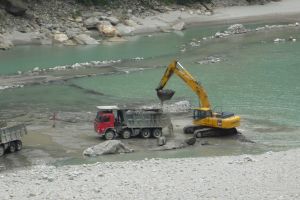
jamuna sand
Yamuna river sand is a widely used construction material and is the most preferred choice as a fine aggregate material. High quality of Yamuna sand makes it perfect to be used for plastering house.
...more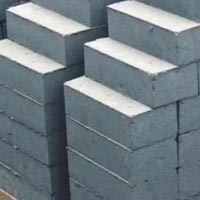
Fly Ash Bricks
Fly ash Bricks "Eco friendly product" is a Pulverised ash brick (PAB) technology is a process of converting industrial waste materials into quality building materials. At present, the technology is well established in converting thermal power plant waste into quality bricks. These bricks are machine made & uniform in shape and size, therefore, here is no variation in size of the bricks & require less mortar in. The thickness of plaster can be reduced substantially. Fly Ash Bricks is lighter & manufacturing process is also faster than the conventional clay bricks. The bricks are ready for dispatch within 12 hours of manufacture. These bricks are manufactured throughout the year, even during the monsoons. FLY ASH is the extremely fine ash 'flying' along with flue gases is trapped in electro-static precipitators (ESP) and is collected. Fly ash is used for the manufacturing of bricks and these bricks are also called fly ash bricks. These are environmental friendly and are also economical when it comes to finances as compared to various other building products. Many builders use the fly ash bricks because of their comparative strength than the conventional bricks. The fly ash brick is made by compression of class C fly ash and water at 28 Mpa [272 atm] and after this, it is cured for a time period f 24 hours in steam bath at 66 degree Celsius. After this, the air entertainment agent is used for toughening. The lasting time of these bricks exceeds 100 freeze thaw cycles. The class C fly ash has high concentration level of calcium oxide and this is the reason the brick is also called as the self cementing brick. One achieves the block hardness by the cement strength and by the process called autoclaving; there is instant curing mechanism in the brick. The fact is gypsum is a long term strength gainer. The aluminium paste provides the chemical reaction and this provides the insulation properties as compared to other concrete materials that are light in weight. Role in construction/infrastructure projects in India There is a major use of fly ash bricks in the construction projects of India because of their high strength and in practical; one does not find any leakage during use as well as during the transportation. Because of their uniform size, there is reduction in mortar usage to the level of fifty percent for joint and plaster. Water penetrates at the low levels resulting in reduction of water seepage through bricks. All these are highly noteworthy for the builder of infrastructure projects in India resulting in a great demand of these bricks for various construction projects. Comparison between fly ash and normal bricks The fly ash bricks have a pleasing colour that resembles cement as compared to the normal bricks that have the colour variation depending n the soil. The fly ash bricks have the smooth finish and the uniform shape as compared to uneven shape of normal bricks. These bricks also carr y dense composition compared to light bonded normal bricks. Advantages Fly-Ash Bricks is lighter than the others The manufacturing process is also faster than the conventional clay bricks Ready for dispatch quickly Comparative strength as compared to other conventional bricks. One can apply gypsum plaster on these bricks directly without the lime plaster backing coat. There is no need to soak these bricks in water for a period of 24 hours. Before the usage, one can just sprinkle the water and that is enough. Since the fly ash comes from the power plant residues, this is an environment friendly brick. This brick helps in environment safety as well as soil depletion.
...more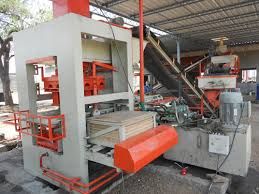
Fly Ash Brick Plant
Fly ash Bricks "Eco friendly product" is a Pulverised ash brick (PAB) technology is a process of converting industrial waste materials into quality building materials. At present, the technology is well established in converting thermal power plant waste into quality bricks. These bricks are machine made & uniform in shape and size, therefore, here is no variation in size of the bricks & require less mortar in. The thickness of plaster can be reduced substantially. Fly Ash Bricks is lighter & manufacturing process is also faster than the conventional clay bricks. The bricks are ready for dispatch within 12 hours of manufacture. These bricks are manufactured throughout the year, even during the monsoons. FLY ASH is the extremely fine ash 'flying' along with flue gases is trapped in electro-static precipitators (ESP) and is collected.
...more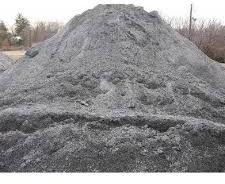
Construction Sand
River sand got from the Yamuna plays a major role in the infrastructure projects in India. This is far more superior to any other sand therefore, it is highly preferable. River sand has a major role in concrete and without it; concrete will not function as it is intended. The specific properties of concrete mix will be determined as per the proportion. The strong concrete will emerge from aggregate that is well graded and labelled.
...more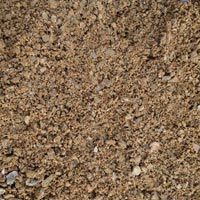
Coarse Sand
Coarse Sand plays a very strengthen role in concrete, Coarse aggregates are particles greater than 4.75mm, but generally range between 9.5mm to 37.5mm in diameter. The compressive strength is an important factor in the selection of coarse sand. When determining the strength of normal concrete, most concrete aggregates are several times stronger than the other components in concrete and therefore not a factor in the strength of normal strength concrete. Coarse sand is a granular material that occurs naturally and the composition is basically the finely divided rocks and various other particles of minerals. One can define this particular sand by size and this is fine as compared to gravel but it is coarser as compared to the silt. One can define this sand depending on the textural class soil or the particular soil type. The soil particularly contains sand sized particles that exceed by eighty five percent. The composition of this particular sand has a variation and this depends on various sources of local rocks and various other conditions but the important constituent is silicon dioxide. Another important constituent is the calcium carbonate. As per the particle size, as provided by the geologists, the diameter can go up to 2 mm. The individual particle is called the sand grain. The most common constituent silicon dioxide generally in the quartz form is a mineral resistant for weathering. The bright white sand in this segment is found in the sub tropical and tropical coastal settings. Making Process of Coarse Sand Although available naturally, there are various equipments used in the making and these primarily are jaw crusher, impact crusher, cone crusher etc. The process is time oriented and in the present times many state of the art equipments in this area are digitally controlled. Modern equipments used for the coarse sand making in the present times do not need the ample space as compared to the mechanically controlled equipments that had the old technology associated with them. Fine Sand Vs. Coarse Sand The prime difference is in the texture and particle density. The coarse sand is comparatively hard in texture and the granules are bigger in size.
...more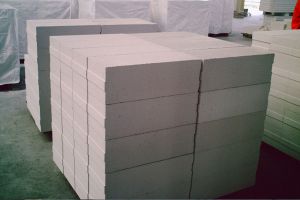
Clc Plant
AAC Stands for Autoclaved cellular concrete. Blocks are about 50% lighter than clay bricks of equivalent size. This translates into less dead weight of a building and allows entire structure to be lighter therefore reducing amount of steel and concrete used in structural components like beams, columns and rooffloor slabs. These blocks are very easy to work with and can be cut accurately reducing the amount of waste generated. Manufacturing of AAC blocks does not consume high amount of energy. Moreover since blocks are light weight & environment friendly, it saves energy required for transportation and leads to reduced CO2 emissions by transport vehicles. Buildings can be built with AAC blocks 50% faster compared to clay bricks. This translates to lower project completion times benefiting project developers. A sound absorption & property of blocks makes it ideal material for reducing ambient noise. AAC blocks are well-suited for establishments like hospitals and offices situated in noisy areas. CLC blocks stand for Cellular Light Weight Concrete. One produces CLC by the combination of compressed air with the liquid foaming agent that is non-toxic. The foam that is produced is put into regular concentrate that comprises of water, sand and cement. This leaves various but tiny and discrete air pockets in the material.
...more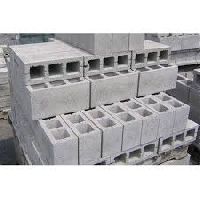
Clc Block
AAC Stands for Autoclaved cellular concrete. Blocks are about 50% lighter than clay bricks of equivalent size. This translates into less dead weight of a building and allows entire structure to be lighter therefore reducing amount of steel and concrete used in structural components like beams, columns and rooffloor slabs. These blocks are very easy to work with and can be cut accurately reducing the amount of waste generated. Manufacturing of AAC blocks does not consume high amount of energy. Moreover since blocks are light weight & environment friendly, it saves energy required for transportation and leads to reduced CO2 emissions by transport vehicles. Buildings can be built with AAC blocks 50% faster compared to clay bricks. This translates to lower project completion times benefiting project developers. A sound absorption & property of blocks makes it ideal material for reducing ambient noise. AAC blocks are well-suited for establishments like hospitals and offices situated in noisy areas.
...more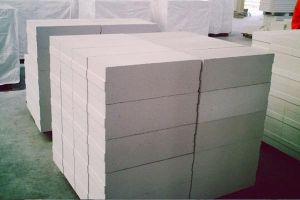
AAC Blocks
Our company is considered to be one among the pioneers in the manufacture of AAC Blocks in Gurgaon, Haryana. AAC Blocks are extremely light, resulting in the building structure to be lighter. Thus, it needs less reinforcement, saving a large quantity of steel required for construction. AAC Blocks have high capacity to absorb sound, and is the perfect choice for constructing buildings situated in noisy areas. We manufacture AAC Blocks by following all the quality control measures. Details : AAC Stands for Autoclaved cellular concrete & CLC stand for Cellular Light Weight Concrete Blocks are about 50% lighter than clay bricks of equivalent size. This translates into less dead weight of a building and allows entire structure to be lighter therefore reducing amount of steel and concrete used in structural components like beams, columns and roof/floor slabs. These blocks are very easy to work with and can be cut accurately reducing the amount of waste generated. Manufacturing of AAC & CLC blocks does not consume high amount of energy. Moreover since blocks are light weight & environment friendly, it saves energy required for transportation and leads to reduced CO2 emissions by transport vehicles. Buildings can be built with AAC blocks 50% faster compared to clay bricks. This translates to lower project completion times benefiting project developers. A sound absorption & property of blocks makes it ideal material for reducing ambient noise. AAC blocks are well-suited for establishments like hospitals and offices situated in noisy areas.
...more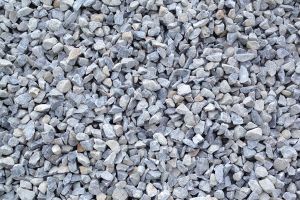
Construction Aggregates
We manufacture superior grade Construction Aggregates, perfect for high yielding construction jobs in and around Gurgaon, Haryana. It will form the perfect additive to cement, increasing its structural strength. We are equipped to supply Construction Aggregates in two forms, as per the customer demand; pre-cast and ready-mixed. We use only the finest raw materials for the manufacture, and exercise strict quality control measures while processing Construction Aggregates to ensure its superior grade. Details : Aggregate plays an important role in concrete, the purpose of the aggregates within this mixture is to provide a rigid skeletal structure and to reduce the space occupied by the cement paste. Usually it is supplied in one of two main forms: precast (blocks, tiles, pipes, bridge beams, flooring systems, etc) or ready-mixed (as a liquid paste ready for pouring). It is used for the foundations, walls, floors, roofs and partitions of buildings, as well as bridges, dams, power stations and many other kinds of physical structures.
...more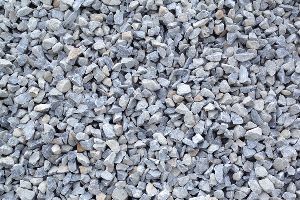
Aggregates
Aggregate plays an important role in concrete, the purpose of the aggregates within this mixture is to provide a rigid skeletal structure and to reduce the space occupied by the cement paste. Usually it is supplied in one of two main forms: precast (blocks, tiles, pipes, bridge beams, flooring systems, etc) or ready-mixed (as a liquid paste ready for pouring). It is used for the foundations, walls, floors, roofs and partitions of buildings, as well as bridges, dams, power stations and many other kinds of physical structures. Aggregates are the materials in the inert granular form and these include the crushed stone, gravel and sand. When mixed with the Portland cement and water, these become the essential ingredients when it comes to the making of concrete. If one wants the mix of good concrete, the aggregates have to be clean and hard. The particles have to be strong and there has to be the absence of clay coatings and the absorbed chemicals. There should also be the absence of fine materials that are responsible for causing the deterioration of the concrete. Influence of aggregates There is a strong influence of the aggregates on the recent mixed as well as hardened properties of the concrete. Another influence is on the proportion of the mixture as well as the economy. The fact is aggregate selection is process of importance. There is expectation in slight variation in the aggregate properties and there are certain important characteristics as mentioned below: Grading Durability Surface texture and shape of the particle Skid resistance and abrasion Voids and unit weights Surface moisture and absorption The reference of grading is with respect to determining the particle size distribution as far as the aggregate is concerned. The limits of grading and the maximum size of aggregate are specified because these properties have an impact the aggregate amount used apart from the water and cement requirements, pump-ability, durability and workability of concrete. In the general cases, in case, there is the correct selection of the water cement ratio, there is use of wide range of grading without the major impact on strength.
...more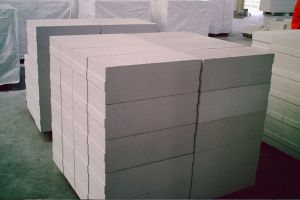
AAC Blocks
AAC Stands for Autoclaved cellular concrete. Blocks are about 50% lighter than clay bricks of equivalent size. This translates into less dead weight of a building and allows entire structure to be lighter therefore reducing amount of steel and concrete used in structural components like beams, columns and roof/floor slabs. These blocks are very easy to work with and can be cut accurately reducing the amount of waste generated. Manufacturing of AAC blocks does not consume high amount of energy. Moreover since blocks are light weight & environment friendly, it saves energy required for transportation and leads to reduced CO2 emissions by transport vehicles. Buildings can be built with AAC blocks 50% faster compared to clay bricks. This translates to lower project completion times benefiting project developers. A sound absorption & property of blocks makes it ideal material for reducing ambient noise. AAC blocks are well-suited for establishments like hospitals and offices situated in noisy areas. CLC blocks stand for Cellular Light Weight Concrete. One produces CLC by the combination of compressed air with the liquid foaming agent that is non-toxic. The foam that is produced is put into regular concentrate that comprises of water, sand and cement. This leaves various but tiny and discrete air pockets in the material. This is not like AAC [autoclaved aerated concentrate] because here, there is no application of heat during the manufacturing process. By CLC, one can make many building products and these include panels, building blocks and decorative precast fences. An AAC block comes in the form of lightweight precast foam concrete material for the building. This provides the structure fire and mold-resistance. It was invented in Sweden by the famous architect/ inventor and the production started by the year 1929 in Sweden. The industry of AAC blocks has a strong growth in the Asian region because of the great demand in the housing and commercial space. In the present times, the major players in Asia like India, China, middle east and the central Asian regions have a huge demand when it comes to the AAC manufacturing and production. AAC Blocks Manufacturing Process Not like the various other concrete applications, one produces AAC by the use of no aggregate other than sand. The binding agents used are calcined gypsum, quartz sand, cement or lime and water is used as the agent for binding. Based on the pre specified density the usage of the aluminium powder is done to the levels between 0.05 -0.08 %. In various countries like China and India, there is use of the fly ash having the silica composition of 50-65% as the aggregate. After mixing the AAC and casting it into forms, there are many chemical reactions that take place and these provide it the light weight that is actually 20% of concrete weight. This process also provides AAC the required thermal properties. The aluminium power undergoes a reaction with the calcium hydroxide and water in order to form hydrogen. By the creation of the foams of the hydrogen gas, the raw mix volume doubles and this created 3mm diameter of gas bubbles. After the foaming process ends, the hydrogen goes into the atmosphere and takes the replacement of air. After the removal of foams from the material, the soft solid is left and it is later cut into blocks. After this, these are placed in autoclave chamber for a time period of 12 hours. There is involvement of stream pressure for the process of hardening. Role in construction/infrastructure projects in India ACC blocks have a high requirement in India and are used as an alternative over many cement constructions in India and the credit goes to the lessening of the solid waste. There is also the availability of the consulting services for the setting up of the sustainable AAC panels and blocks in India. AAC blocks Vs. Red bricks In AAC blocks, the soil consumption is zero but when it comes to the red bricks, carpet area of 1 sq feet will consume 25.5 kg top soil. The dry density is much lesser compared to red bricks. Manufacturing Process of CLC Blocks The CLC blocks are the cement bonded material and these are made by slurry of cement blend. After this, there is injection of preformed foam into slurry. This is done in order to make the foam concrete. Role of CLC Blocks The CLC bricks have a major role in the infrastructure projects of India because of their comprehensive strength. India is on the path of development and is among the fastest developing nations and different infrastructure projects of private and government corporations are coming up day by day. CLC blocks find major uses even in extreme weather conditions are therefore in the list of preference. Comparision between CLC blocks vs. AAC blocks The equipment used for the CLC has the size compactness compared to the ACC and thus the requirement of less space as compared to the ACC. There is also requirement of less man power in CLC compared to the AAC blocks. This helps in cost cutting and is profitable for business. There is less investment required when it comes to the CLC plants because the machines for these plants are not much expensive as compared to those for the ACC. The set up comes at the lower cost and there is investment reduction to a much greater level. Advantages of AAC Blocks AAC Blocks are lighter than the normal clay bricks. These have the improved thermal efficiency and this causes reduction of cooling and heating load Because of the lighter weight, AAC blocks are easy to use and therefore it reduce the other structural components cost. Because of the porous structure, there is resistance to fire Due to the accurate cutting, minimum sold waste generation takes place Because of the low resource efficiency, there is environmental impact to the low levels It does not consume high amount of energy as compare to normal clay bricks There is saving in the carriage cost because of the low weight. When the blocks are large, the mason work speeds up There is reduction in the cost of the project Environment friendly and energy saving Great ventilation and acoustics Advantages of CLC Blocks The CLC blocks carry the high comprehensive strength with minimum comprehensive strength guaranteed for the bricks is 3N/mm2. There is huge structure savings because of the usage of these blocks to the level of 30% on the cost of beam. These blocks carry the good properties that are earth quake resistant. One can handle these easily and the lightweight CLC is quite easy when it comes to the stock and transportation. One can cut the CLC blocks easily to the custom sized requirements by the help of basic power tools and this is helpful for the faster construction. There is a high saving when it comes to the labour costs. When the construction is fast, there is reduction when it comes to the requirement of labour. The CLC blocks have the thermal insulation at the highest levels. These reduce the expenses of air conditioning to a five times low as compared to the conventional structures. CLC blocs are resistant in case of fire and if the fire occurs, the fumes are non-toxic. These blocks are a wonderful barrier when it comes to the acoustics and there is no indication of noise disturbance from the neighbour. The walls are smooth and accurate and because of this, there is reduction in the plastering. On the walls with CLC blocks, one can go for any type of finishing.
...moreBe first to Rate
Rate ThisOpening Hours